Project description
Observational data suggest that clam populations have been declining throughout the state of Alaska over the last decade. While the Alaska Department of Fish and Game conducts targeted clam distribution and abundance studies, it is impossible for the agency to undertake such studies at every beach across Alaska. The goal of this project is to utilize local observations to help us better understand clam population dynamics across Alaska, and give us a sense of how clam populations have changed over time. The College of Fisheries and Ocean Sciences at UAF is looking for observations of where certain clam species can be found and how that is changing seasonally or annually. This can help us understand how clam species are distributed across the coastline, and the abundance of each species in certain areas.
Whether you are going clamming or simply walking along the beach, dig in the sand a little bit, see if you find any clams, and let us know what you find! Your help will not only add to our database but will also provide sound scientific information that can guide clam management decisions in the future.
Background
The recreational and subsistence collection of clams is an important practice in communities across Alaska. The collection of shellfish has been limited across the state in previous years due to decline in populations, although the causes for the decline are not yet understood. Butter clam, razor clam, and littleneck clam populations within Kachemak Bay have been in decline for the past two centuries. Throughout Cook Inlet, razor clam harvests have declined from an average of 843,136 clams between 1969-2003 (29 clams per digger), to an average of 391,185 clams between 2004-2013 (15 clams per digger). This is almost a 50% decrease in harvest over the past 15 years. The severity of this decline has led to the closure of beaches to clammers until more can be understood about the health of shellfish populations.
Clam populations that are already in decline are likely more sensitive than other species to climate change as their habitats become more limited in resources and nutrients. Researchers at the UAF College of Fisheries and Ocean Sciences are currently investigating the effects of increased carbon dioxide on the physiology of two different clam species to understand their response and potential resilience to climate change on a molecular level. We need help from citizen scientists to understand how these environmental changes are impacting clam abundance and ecosystem level. With the help of citizen scientists marking when and where they find species throughout Alaska, we can begin to identify source and resilient populations where research efforts can be focused.
Observing Guidance:
We are asking that data be collected using the EpiCollect5 mobile app. The EpiCollect5 app is availble on iTunes and Google Play. Add the Clam Survey to get started! You will be able to open the app and record data even if you are in areas without cell service.
Once you have downloaded EpiCollect5, and added the Clam Survey project, you are ready to help collect clam data.
Each time you dig for clams, we are asking you to record the following information using EpiCollect:
- Date
- Time
- Location
- What type of substrate, or ground, you are in (sand, mud, clay, silt, or a combination)?
- What species did you find? Take at least one photo of each of the clam species you encounter. When taking photos, leave the clams where they were and put a thumb next to them, so we can see their approximate size (this helps us determine their age)
- How many of each species did you find?
- How does this clamming season compare to previous years?
- How often per season do you go clamming here?
- How long have you or your family been coming here to collect clams?
- Do you clam for recreation or subsistence?
As a local resident, you know your area very well, and are best able to tell if anything in the environment has changed. As you are digging for clams, we would also like you to consider whether or not you observe any changes to the surrounding environment that may affect clam populations. Has the number of clams that you usually harvest changed this year compared to previous years? Are you noticing more sea mammal activity in the area? Have there been changes to the sea vegetation that you normally encounter? These are just questions to consider, but we are interested in hearing about any changes to the environment that you observe. Please send any observations of environmental change to observation@leonetwork.org
Source Data
This project will use a combination of the Epi Collect data, and other shellfish observations from LEO members, to see where current clam populations are, and where they’re shifting. These observations will be used alongside physiological data to understand the resilience of some clam species to climate change.
Thank you for any and all of the observations you can provide. If you have additional questions or would like to help in more ways, please email Ashley Rossin at arossin@alaska.edu

Alaska glass scallop (Parvamussium alaskense)
From Common seashore animals of Southeastern Alaska: A field guide by Aaron Baldwin
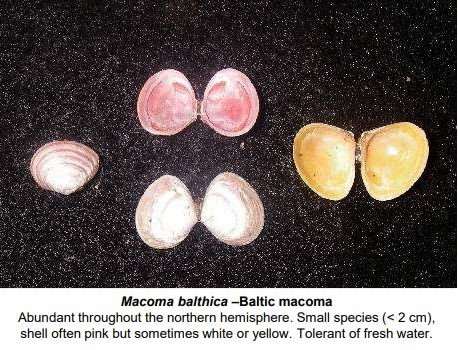
Baltic macoma (Macoma balthica)
From Common seashore animals of Southeastern Alaska: A field guide by Aaron Baldwin
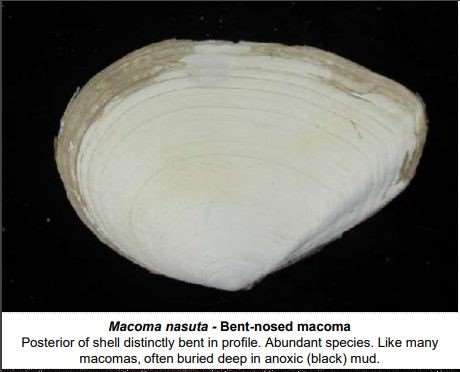
Bent-nosed macoma (Macoma nasuta)
From Common seashore animals of Southeastern Alaska: A field guide by Aaron Baldwin
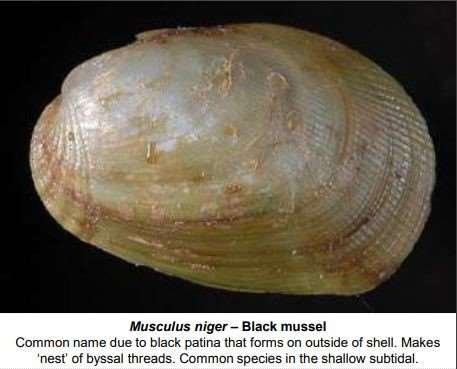
Black mussel (Musculus niger)
From Common seashore animals of Southeastern Alaska: A field guide by Aaron Baldwin

Blue mussel (Mytilus trossulus)
From Common seashore animals of Southeastern Alaska: A field guide by Aaron Baldwin

Broad smooth cockle (Serripes laperousi)
From Common seashore animals of Southeastern Alaska: A field guide by Aaron Baldwin

Butter clam (Saxidomus giganteus)
From Common seashore animals of Southeastern Alaska: A field guide by Aaron Baldwin
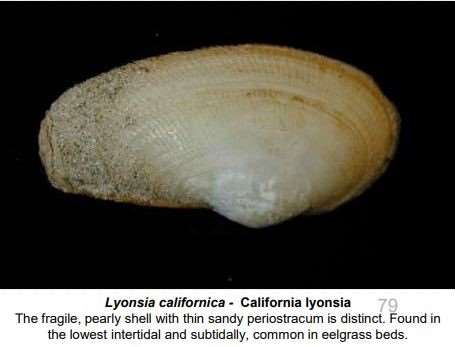
California lyonsia (Lyonsia californica)
From Common seashore animals of Southeastern Alaska: A field guide by Aaron Baldwin

California mussel (Mytilus californianus)
From Common seashore animals of Southeastern Alaska: A field guide by Aaron Baldwin

California smoothshell clam (Cryptomya californica)
From Common seashore animals of Southeastern Alaska: A field guide by Aaron Baldwin

California sunset clam (Gari californica)
From Common seashore animals of Southeastern Alaska: A field guide by Aaron Baldwin
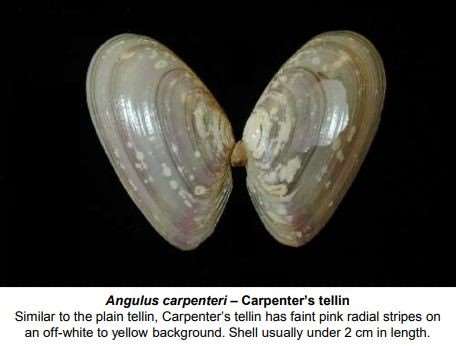
Carpenter's tellin (Angulus carpenteri)
From Common seashore animals of Southeastern Alaska: A field guide by Aaron Baldwin

Common nut clam (Nuculana pernula)
From Common seashore animals of Southeastern Alaska: A field guide by Aaron Baldwin
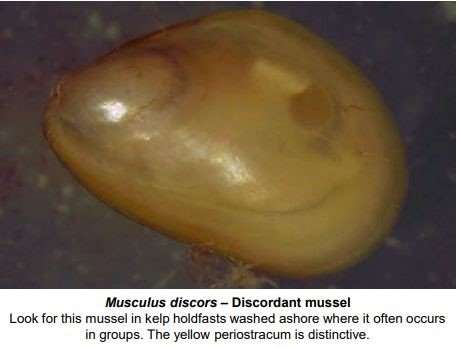
Discordant mussel (Musculus discors)
From Common seashore animals of Southeastern Alaska: A field guide by Aaron Baldwin

Elliptical astarte (Astarte elliptica)
From Common seashore animals of Southeastern Alaska: A field guide by Aaron Baldwin
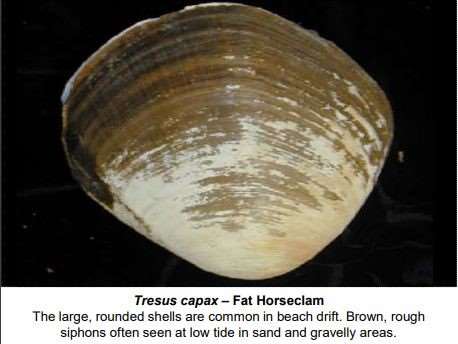
Fat Horseclam (Tresus capax)
From Common seashore animals of Southeastern Alaska: A field guide by Aaron Baldwin

Geoduc clam (Panopea abrupta)
From Common seashore animals of Southeastern Alaska: A field guide by Aaron Baldwin
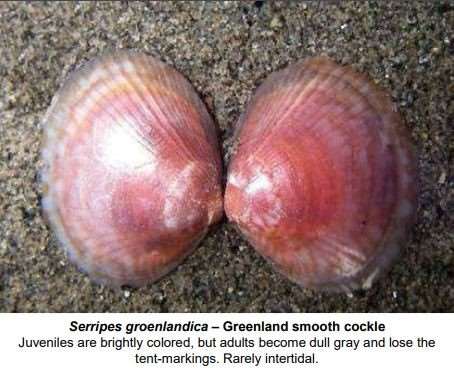
Greenland smooth cockle (Serripes groenlandica)
From Common seashore animals of Southeastern Alaska: A field guide by Aaron Baldwin

Heart cockle (*Clinocardium nuttallii)
From Common seashore animals of Southeastern Alaska: A field guide by Aaron Baldwin

Indian tuskshell or Dentalia (Antalis pretiosum)
From Common seashore animals of Southeastern Alaska: A field guide by Aaron Baldwin
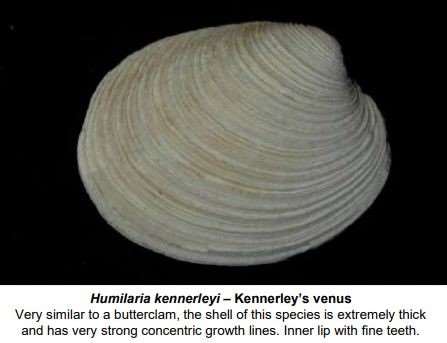
Kennerley's venus (Humilaria kennerleyi)
From Common seashore animals of Southeastern Alaska: A field guide by Aaron Baldwin

Little nut clam (Ennucula tenuis)
From Common seashore animals of Southeastern Alaska: A field guide by Aaron Baldwin

Milky venus clam (Compsomyax subdiaphana)
From Common seashore animals of Southeastern Alaska: A field guide by Aaron Baldwin

Minute venus clam (Turtonia minuta)
From Common seashore animals of Southeastern Alaska: A field guide by Aaron Baldwin

Nestling clam (Hiatella arctica)
From Common seashore animals of Southeastern Alaska: A field guide by Aaron Baldwin
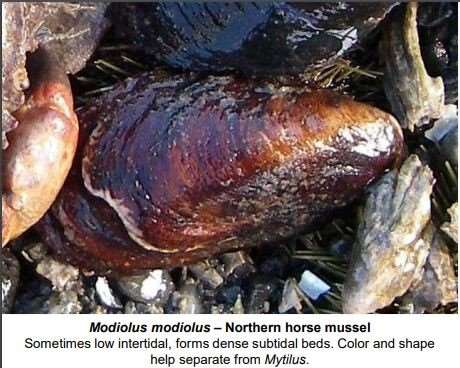
Northern Horse Mussel (Modiolus modiolus)
From Common seashore animals of Southeastern Alaska: A field guide by Aaron Baldwin
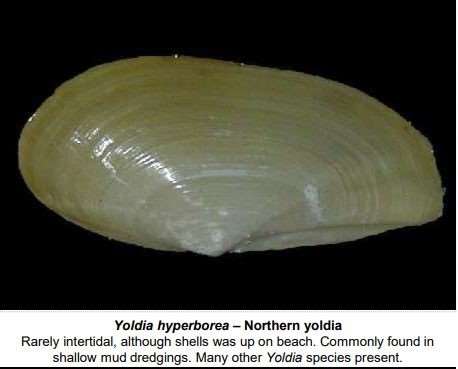
Northern yolida (Yolida hyperborea)
From Common seashore animals of Southeastern Alaska: A field guide by Aaron Baldwin

Northwest ugly clam (Entodesma navicula)
From Common seashore animals of Southeastern Alaska: A field guide by Aaron Baldwin

Pacific oyster (Crassostrea gigas)
From Common seashore animals of Southeastern Alaska: A field guide by Aaron Baldwin

Pacific razor clam (Siliqua patula)
From Common seashore animals of Southeastern Alaska: A field guide by Aaron Baldwin

Pink-necked clam (Mactromeris polynyma)
From Common seashore animals of Southeastern Alaska: A field guide by Aaron Baldwin
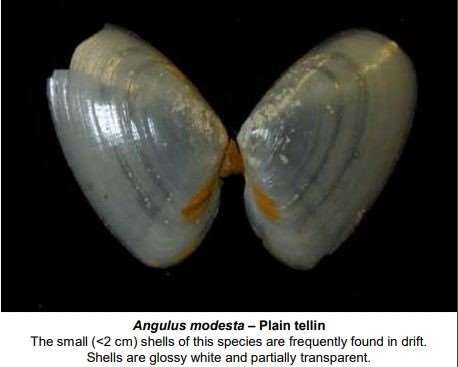
Plain tellin (Angulus modesta)
From Common seashore animals of Southeastern Alaska: A field guide by Aaron Baldwin

Rock scallop (Crassadoma gigantea)
From Common seashore animals of Southeastern Alaska: A field guide by Aaron Baldwin
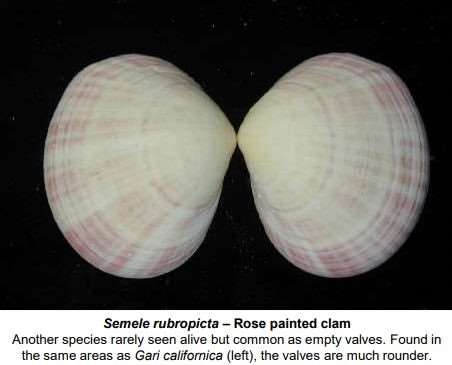
Rose painted clam (Semele rubropicta)
From Common seashore animals of Southeastern Alaska: A field guide by Aaron Baldwin
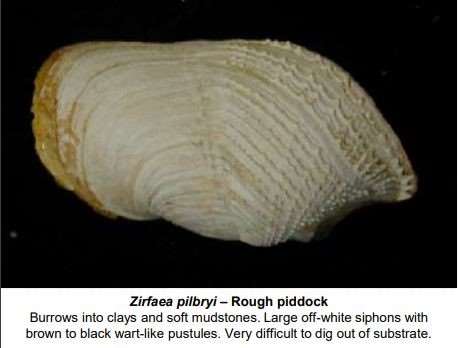
Rough piddock (Zirfaea pilbryi)
From Common seashore animals of Southeastern Alaska: A field guide by Aaron Baldwin

Salmon tellin (Angulus nuculoides)
From Common seashore animals of Southeastern Alaska: A field guide by Aaron Baldwin

Shipworm (Bankia setacea)
From Common seashore animals of Southeastern Alaska: A field guide by Aaron Baldwin

Smooth pink scallop (Chlamys rubia)
From Common seashore animals of Southeastern Alaska: A field guide by Aaron Baldwin

Soft-shelled clam (Mya arenaria)
From Common seashore animals of Southeastern Alaska: A field guide by Aaron Baldwin

Spiny pink scallop (Chlamys hastata)
From Common seashore animals of Southeastern Alaska: A field guide by Aaron Baldwin
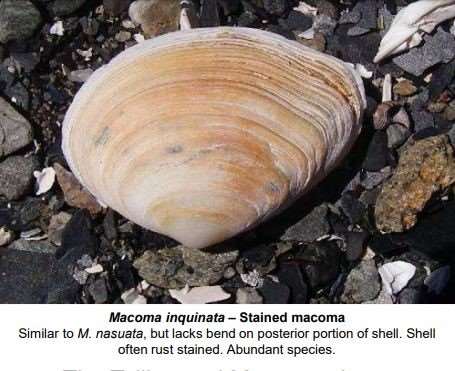
Stained macoma (Macoma inquinata)
From Common seashore animals of Southeastern Alaska: A field guide by Aaron Baldwin

Steamer or littleneck clam (Protothaca staminea)
From Common seashore animals of Southeastern Alaska: A field guide by Aaron Baldwin

Tent Nut Shell (Acila castrensis)
From Common seashore animals of Southeastern Alaska: A field guide by Aaron Baldwin

Threaded pandora (Pandora filosa)
From Common seashore animals of Southeastern Alaska: A field guide by Aaron Baldwin

Tiny sulfer miner (Axinospida serricata)
From Common seashore animals of Southeastern Alaska: A field guide by Aaron Baldwin

Truncate soft-shelled clam (Mya truncata)
From Common seashore animals of Southeastern Alaska: A field guide by Aaron Baldwin

Two ridged pandora (Pandora bilirata)
From Common seashore animals of Southeastern Alaska: A field guide by Aaron Baldwin

Wavy line astarte (Astarte esquimalti)
From Common seashore animals of Southeastern Alaska: A field guide by Aaron Baldwin

Weathervane scallop (Patinopecten caurinus)
From Common seashore animals of Southeastern Alaska: A field guide by Aaron Baldwin